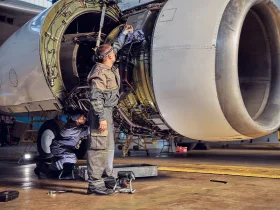Technology advancements change recycling marketplace. The recycling industry is changing fast, and technology plays a major role in the evolution. Advanced scrap solutions modernize the way companies recover, screen, and reuse metals these days. It is good economics, reducing waste, and saving companies money. And will play a critical role in helping the planet build a sustainable future.
Why Scrap Recycling Matters
Metals are very much in demand by global industries — be it automotive, or construction. But mining it from raw materials is costly and terrible for the environment. Recycling offers a powerful alternative.
Recycling makes an enormous difference in energy consumed for many, too. It requires a 95% reduction of energy to recycle aluminum compared to mining it from the earth. Thanks to our modern scrap solutions rather, recovery rates can be maximized at recycling plants, meaning there will be fewer valuable resources going to landfills. This creates the necessity of recycling, which at the same time is an opportunity.
What Makes Scrap Solutions Effective?
In the 21st century, scrap recycling technology enhances efficiency in each step of the recycling process. Some key features include:
- Automatic Sorting: Eliminates the need to separate metals through magnets, eddy current and sensor are all done very quickly with these sorters.
- Shredding Plants: Shred the scrap into uniform small pieces for feeding to the furnace.
- Dust & Waste: Avoiding hazards and keeping it green.
These systems accelerate and improve work by automating tasks that used to be done by hand.
Business and Environmental Benefits
The advantages of using advanced scrap solutions are obvious:
- Savings of Money: Recycled metals are less costly than new raw materials.
- Productivity: Production is faster with automation and fewer workers are needed.
- Sustainability: Fewer materials sent to the landfill, less greenhouse gas emissions.
- Compliance: Complies with industry and government environmental standards.
For companies, this doesn’t make recycling a dreaded duty, but a smart business strategy.
Industries Using Scrap Solutions
Today the recovery of scrap is accepted by industries as:
- Automobiles: Engines, frames, and aluminum parts are recycled.
- Construction: We recover steel beams, copper wiring, plumbing fixtures etc.
- Electronics: Gold, silver, and palladium are reclaimed from e-waste.
- Production: Reusing leftover scraps from manufacturing lines effectively.
Each sector achieves cost savings, increased sustainability, and contributes to the circular economy.
Future of Scrap Recycling
The next generation of scrap solutions will revolve around intelligent automation and AI sorting. Facilities are able to pinpoint metals, minimize contamination, and improve recovery.
As the world’s demand for eco-friendly measures continue to climb, organizations implementing these technologies will not only have an upper hand but will also contribute to the planet’s conservation.
Conclusion
Scrap solutions are redefining the recycling industry with combination of efficiency, profitability, and environmental concern. Companies who invest in these technologies will not only be able to cut down on costs, but also invest capital in a sustainable and forward-thinking business. The way forward is obvious — the answer to better recycling lies in better scrap. These advances enable industry to unplug from the waste stream, and instead use waste as the raw materials for value-added products. They also enable companies to reinforce the brand-image and market-position as environmentally friendly pioneer in the (beforementioned) industry. In the end, the promise of scrap solutions isn’t so much recycling as reimagining the way industries can build a greener world.














